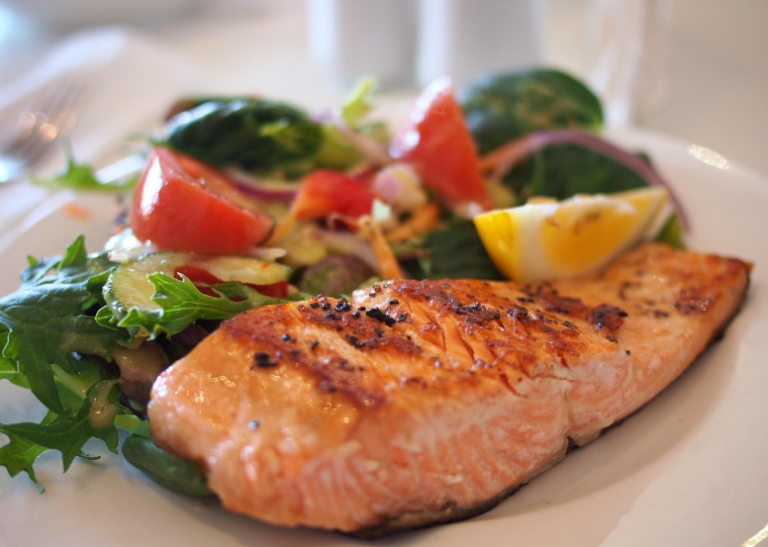
In a world where health trends come and go, the concept of superfoods has remained a staple in healthy eating. But what exactly makes a food “super”? Superfoods are nutrient-dense foods that provide a powerful punch of essential vitamins, minerals, and antioxidants to enhance your well-being. They’re not just trendy; they offer real health benefits that can support everything from brain function to heart health. In this article, we’re going to explore five incredible superfoods you can easily add to your plate today. Ready to boost your health? Let’s dive in.
What Are Superfoods?
Before we jump into our top 5 superfoods, it’s essential to understand what makes a food “super.” Superfoods are natural foods that are high in nutrients and low in calories. They are packed with vitamins, minerals, antioxidants, and fiber that work together to combat disease, improve energy levels, and promote overall health.
Nutritional Powerhouses
Each superfood is like a mini multivitamin, giving you concentrated amounts of essential nutrients in a small serving. For example, certain superfoods are high in antioxidants, which fight oxidative stress, inflammation, and aging. Others are rich in omega-3 fatty acids, which are crucial for heart and brain health.
Superfood #1: Blueberries
First on our list is the small but mighty blueberry. These tiny berries are packed with antioxidants, particularly anthocyanins, which are known for their anti-inflammatory properties.
Health Benefits of Blueberries
Blueberries have long been celebrated for their ability to support brain health, combat oxidative stress, and reduce inflammation. Studies suggest that eating blueberries regularly can improve cognitive function and memory. Plus, their rich antioxidant content helps protect against chronic diseases, like heart disease and cancer.
How to Incorporate Blueberries
Blueberries are incredibly versatile. You can add them to smoothies, sprinkle them on top of oatmeal, or simply snack on them. They also make a delicious addition to desserts, like yogurt parfaits or fruit tarts. The possibilities are endless!
Superfood #2: Kale
Kale, the leafy green that’s taken the health world by storm, is another must-have superfood. Packed with essential vitamins and minerals, this green powerhouse is a great addition to any diet.
Health Benefits of Kale
Kale is rich in fiber, vitamin C, vitamin K, and several important antioxidants. This superfood supports everything from bone health to digestion. It’s also an excellent source of plant-based calcium, which is essential for maintaining strong bones and teeth. Kale’s high levels of vitamin K promote healthy blood clotting and heart function.
How to Incorporate Kale
You can enjoy kale in so many ways—add it to salads, throw it into smoothies, or even bake it into crispy kale chips. Want something warm? A kale soup or sautéed kale makes for a hearty side dish. Get creative and make this leafy green a regular part of your meals.
Superfood #3: Chia Seeds
Don’t let their small size fool you—chia seeds are packed with nutrients. These tiny seeds are a great source of fiber, protein, and omega-3 fatty acids, making them a fantastic addition to any diet.
Health Benefits of Chia Seeds
Chia seeds are known for their high fiber content, which helps regulate digestion and keep you feeling full longer. They’re also packed with omega-3 fatty acids, which are essential for brain function and reducing inflammation. Plus, chia seeds are rich in antioxidants that protect your cells from damage.
How to Incorporate Chia Seeds
Chia seeds are incredibly versatile and easy to use. You can add them to smoothies, make chia pudding by soaking them overnight in milk or a dairy-free alternative, or sprinkle them on top of salads and yogurt. You can also mix them into your baking for an extra nutrient boost.
Superfood #4: Avocados
Rich, creamy, and packed with nutrients, avocados are more than just a trend—they’re a superfood that should be a staple in your diet. These green fruits are loaded with heart-healthy fats, fiber, and a variety of vitamins and minerals.
Health Benefits of Avocados
Avocados are an excellent source of monounsaturated fats, which are beneficial for heart health. They also support healthy skin due to their high vitamin E content, and they aid in nutrient absorption by enhancing the bioavailability of fat-soluble vitamins. Whether you’re looking to boost your skin health or improve digestion, avocados are a great addition to your plate.
How to Incorporate Avocados
Avocados can be used in a variety of dishes. Spread them on toast, blend them into smoothies, or toss them into salads for a creamy texture. You can also use avocados as a base for guacamole or even add them to baked goods for added moisture and nutrients.

Superfood #5: Salmon
Last but certainly not least is salmon. This oily fish is packed with omega-3 fatty acids, which are essential for brain health and overall well-being.
Health Benefits of Salmon
Salmon is one of the best sources of omega-3 fatty acids, which play a crucial role in brain function, reducing inflammation, and promoting heart health. It’s also rich in high-quality protein and provides essential vitamins like vitamin D and B12. Eating salmon regularly can help improve memory, boost mood, and reduce the risk of heart disease.
How to Incorporate Salmon
Salmon can be prepared in many different ways—grilled, baked, or even pan-seared. Serve it on a salad, in a sandwich, or enjoy it with a side of roasted vegetables for a balanced, nutritious meal.
Conclusion
Incorporating superfoods like blueberries, kale, chia seeds, avocados, and salmon into your diet is an excellent way to support overall health and wellness. These nutrient-dense foods provide a wide array of benefits, from improving brain function to supporting heart health. So why not take the leap and add them to your plate? Supercharging your diet has never been easier!

FAQs
1. Can I mix different superfoods together?
Absolutely! In fact, combining superfoods can give you a broader range of nutrients. Try mixing chia seeds and blueberries in a smoothie or topping your avocado toast with salmon.
2. How many superfoods should I consume daily?
There’s no exact number, but aim to include at least 2–3 superfoods in your meals each day. The key is variety, so you’re getting a range of nutrients.
3. Are superfoods effective for weight loss?
While no food is a magic bullet for weight loss, superfoods can help you maintain a healthy weight by providing nutrient-dense options that keep you full and satisfied longer.
4. Can superfoods replace regular meals?
Superfoods are best used as part of a balanced diet, not as meal replacements. They’re packed with nutrients, but you still need a variety of foods for proper nourishment.
5. What are some affordable superfood options?
Some affordable superfoods include oats, sweet potatoes, spinach, and beans. These nutrient-dense foods provide great value for their health benefits.





